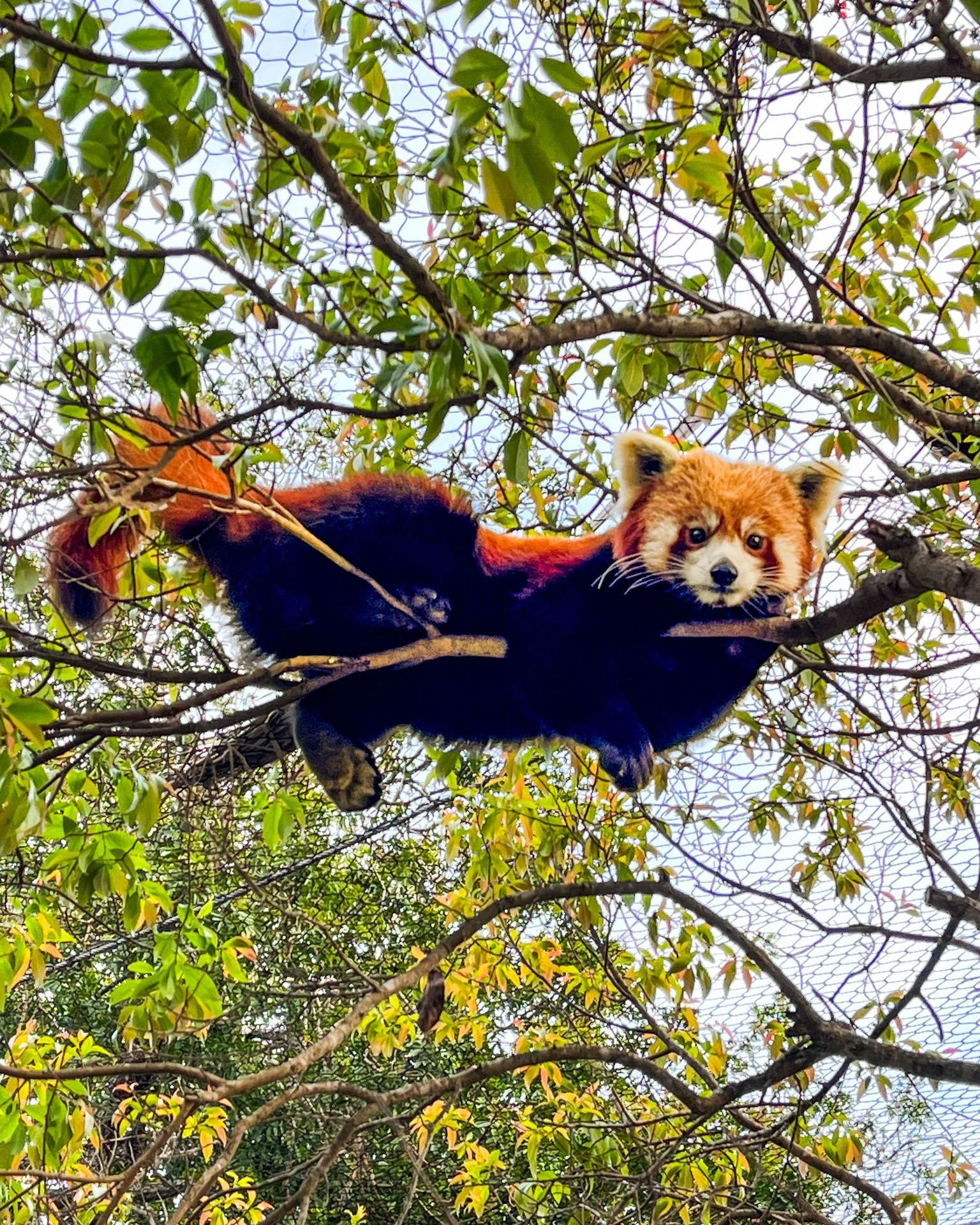- The unique physical and behavioral traits of red pandas that enable them to thrive in their arboreal habitats.
- The significance of the red panda’s crepuscular lifestyle and its impact on their energy conservation strategies.
- The role of habitat preservation and global conservation efforts in safeguarding red pandas.
- The challenges red pandas face due to habitat destruction and human encroachment.
- The importance of zoo management and public education in fostering wildlife conservation awareness.
Red pandas, with their charismatic appearance and endearing behaviors, are symbols of the intricate balance of life in the subtropical and temperate forests of the Eastern Himalayas. Their arboreal nature is a testament to their adaptation to a life in the trees. This section delves into how their physical characteristics and daily activities are deeply intertwined with their tree-dwelling existence.
Red pandas possess a variety of adaptations that facilitate their arboreal lifestyle. Their sharp, semi-retractable claws allow them to grip tree bark effortlessly. This feature is crucial for climbing and navigating trees, with the poise of a seasoned acrobat. Their long, bushy tail serves a dual purpose: providing balance as they maneuver among branches, and doubling as a cozy wrap for warmth during cooler weather. The panda’s false thumb, an extension of the wrist bone, is an exceptional adaptation for grasping bamboo and other vegetation, ensuring they can efficiently procure their primary food source. These traits collectively allow red pandas to move through the treetops with agility, conserving energy by foraging within a concentrated area.
Equally fascinating is the red panda’s crepuscular nature. Being crepuscular means being most active during twilight hours, specifically around dawn and dusk. This behavior is primarily guided by their physiological need to conserve energy. In the wild, where the abundance and accessibility of food can fluctuate, such energy-saving strategies become vital. During these peak activity times, red pandas focus on foraging, taking advantage of lower predator activity and cooler temperatures. By opting for this lifestyle, red pandas effectively navigate a niche where they can reduce competition with diurnal and nocturnal species.
Despite their endearing qualities, red pandas face significant conservation challenges. Habitat destruction poses a direct threat to their survival, with logging, agriculture, and expanding human settlement leading to deforestation and habitat fragmentation. These changes jeopardize the very trees that provide shelter and food, destabilizing their arboreal life. Furthermore, illegal pet trade and poaching, driven by demand for their striking pelts, compound the pressures on wild populations. In addressing these issues, it is imperative that conservation efforts focus on preserving and restoring natural habitats.
Globally, various conservation initiatives aim to protect red pandas and their environments. Coordinated by organizations like the Red Panda Network, community-based conservation programs stress the importance of sustainable practices and habitat management. By engaging local communities living within red panda ranges, these programs foster awareness and responsibility towards conserving biodiversity. In addition, creating protected areas and wildlife corridors helps maintain genetic diversity and allows easier migration for these creatures.
Human activity and urban expansion have brought humans closer to red pandas, leading to conflict scenarios. Understanding red pandas’ ecological role and conserving their habitats can reduce these conflicts. Effective legislation and enforcement can prevent illegal wildlife trade and poaching. With robust conservation policies, the chances of ensuring long-term survival for species like the red panda increase significantly.
Zoos around the world play an essential role in this conservation narrative by acting as arks for endangered species. They provide sanctuary and breeding opportunities for red pandas, helping maintain a viable population. Collaboration between zoos, involving inter-zoo breeding programs, ensures genetic diversity. The careful management of these zoo populations also acts as a genetic reservoir for the species, offering a safety net against extinction.
Moreover, zoos serve as educational platforms, raising awareness about red pandas and the threats they face. Informative exhibits and interactions with zoo experts emphasize the need for wildlife protection and inspire action among visitors. By seeing these animals up close and learning about their natural behaviors and habitats, the public gains a deeper appreciation of biodiversity and its critical preservation.
Ultimately, raising public awareness and encouraging sustainable living practices remain pivotal for red pandas’ survival. Through education and conservation efforts, a sense of global responsibility towards protecting red pandas and their habitats can be fostered. The future of red pandas is a reflection of interactions between human society and the natural world, aiming towards conservation and conscientious environmental stewardship.
*****
Source Description
“Oh, you know. Just hanging out!”
Red pandas are arboreal and crepuscular. They spend most of their time resting in trees to conserve their energy for when they are most active during the twilight hours of the morning and evening.
📸: Keeper Ryan
Alt-text: Raj the red panda lies along a skinny tree branch as he looks down at us from his elevated lounge spot.


